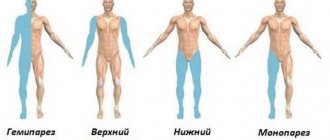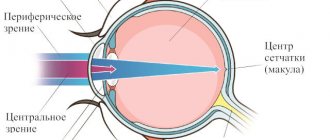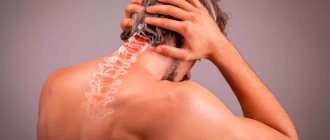Reasons for development
Tetraparesis is divided into acquired and congenital. The first type of disease occurs due to spinal injury, cerebral hemorrhage, the appearance of benign or malignant formations, encephalitis and polyneuritis. Congenital - due to complications during intrauterine development. Also the reason may be:
- Krabbe disease;
- Arnold-Chiari syndrome;
- cerebral palsy;
- Guillain-Barre syndrome;
- obstruction of cerebral vessels;
- myasthenia gravis;
- high intracranial pressure;
- complication after surgery on the spine or brain;
- dropsy of the brain.
Causes
Impaired motor functions in children and adults are diagnosed against the background of numerous provoking factors. In most cases, the triggering mechanism is a serious illness.
Spastic tetraparesis in children is provoked by the following pathological changes:
- acute cerebrovascular accident;
- thrombosis of large arteries;
- myasthenia gravis;
- neurosurgical operations;
- polyneuritis;
- encephalitis;
- cerebral palsy (CP);
- dropsy of the brain;
- polyneuropathy;
- inflammatory processes in the cervical vertebrae;
- malfunction of the central nervous system.
Increased intracranial pressure, which is present in a child or adult for a long time, also provokes impaired motor functions in the legs and arms.
Separately, it is worth highlighting the provoking factors that contribute to the development of the disease in children:
- premature birth of a baby;
- infectious damage to the maternal body during pregnancy;
- Rh blood group factor;
- multiple pregnancy;
- low birth weight of the baby;
- intoxication of the body;
- complications during labor;
- seizures;
- development of jaundice in a child;
- dysfunction of the thyroid gland in the expectant mother.
At risk are patients who have been diagnosed with malignant or benign processes in the body. The same applies to people after surgery on the brain or spine.
Types of tetraparesis
The disease has several forms:
- Spastic. There is a high tone of the muscles of the limbs and constrained movements due to high intracranial pressure.
- Central. Appears due to injury to two hemispheres, the upper spinal cord or brain stem.
- Reflex. Hypertonicity and hyperreflexia are observed in the arms and legs in the presence of normal muscle strength. Pathological reflexes.
- Lethargic. Weakness and loss of sensitivity appear in the limbs.
- Mixed. This form is characterized by different muscle tone in the limbs—hypotonicity and hypertonicity occur simultaneously.
Some people confuse mixed cerebral palsy and tetraparesis, but these are different diseases. Cerebral palsy is one of the causes of tetraparesis. In this case, the cerebellum is affected in children. They cannot hold their head up, sit, stand or move around without assistance. A child with this diagnosis has delayed mental and intellectual development.
Why does tetraparesis occur?
Spinal cord injury
The cause of tetraparesis in spinal cord injury is compression or destruction of nervous tissue, ischemia, and hemorrhage. The condition is detected with fractures, dislocations, fracture-dislocations, and open wounds. At first, the phenomena of flaccid paresis are detected, later - spastic. Pathology can be observed with injuries such as:
- Spinal cord concussion.
The decrease in muscle strength is slight or moderate and is transient. - Spinal cord contusion.
A combination of functional and organic disorders is typical; in the long term, residual effects of varying severity are likely. - Compressive myelopathy.
Occurs due to swelling, compression by hematoma or hard structures. It can be acute, early, late. - Anatomical break.
Crushing or rupture of the spinal cord is observed with gunshot fractures or wounds with bone fragments. - Circulatory disorders.
They develop against the background of hemorrhages in the spinal cord and interthecal space, damage to the great vessels.
In the acute period, the real severity of the disorders is often difficult to assess due to spinal shock, in which movements, sensitivity and reflexes below the site of injury are completely lost due to extreme inhibition. The shock resembles a picture of a total rupture of the spinal cord, but subsequent movements are gradually restored, and a residual neurological deficit is formed due to areas of uncompensated tissue destruction.
Tetraparesis
Vascular pathologies
Disorders of the cerebrospinal circulation with the development of tetraparesis occur as a result of congenital (hypoplasia) and acquired (embolism, thrombosis, atherosclerosis) diseases of the vessels involved in the blood supply to the spinal cord. In some patients, they are caused by compression by tumors, inflammatory infiltrates, and enlarged lymph nodes. Sometimes they form as a result of iatrogenic damage, against the background of hemorrhagic diathesis or infectious vasculitis.
In spinal stroke, tetraparesis occurs acutely within minutes or hours. Foci of ischemia and hemorrhage at the C1-C4 level, often accompanied by respiratory disorders, are especially dangerous. If the underlying segments are affected, tetraparesis or tetraplegia is observed with a decrease in tone in the muscles of the arms and an increase in the muscles of the legs, spontaneous breathing is preserved.
With transient disorders of the spinal circulation, myelogenous intermittent claudication and sudden weakness in the limbs with or without loss of consciousness when throwing the head back are detected. Against the background of transient disorders, persistent progressive tetraparesis gradually develops.
Circulatory disorders in arteriovenous malformations of the spinal cord can also be acute (apoplectic form) or gradually developing (paralytic form). The clinical picture in the first case corresponds to a hemorrhagic stroke. In the second category of patients, a progressive or intermittent course is observed. The appearance of symptoms of tetraparesis may be preceded by radicular syndrome.
Inflammatory pathologies
Half of the cases of cervical myelitis occur due to infectious damage to the spinal cord by mycoplasmas, herpes simplex virus, cytomegalovirus, spirochete pallidum, borrelia, and meningococci. Sometimes myelitis is complicated by spinal osteomyelitis. The remaining cases of the disease are associated with damage to the nervous tissue by neurotropic poisons and the development of inflammation due to injuries. Along with the symptoms of tetraparesis, intoxication syndrome and general hyperthermia are observed.
Poliomyelitis is caused by enteroviruses. Tetraparesis is less common than paraparesis and is found in the spinal variant of the disease. Muscle weakness occurs a few days after the onset of general infectious symptoms. Along with the muscles of the limbs, the diaphragm, muscles of the face and torso can be involved in the process. The centers regulating vital functions in the medulla oblongata may be damaged. The recovery period lasts about a year, resulting in contractures, deformities, and persistent flaccid paralysis.
Acute radiculoneuropathy in neuroAIDS is manifested by flaccid tetraparesis, bulbar disorders, and facial nerve paresis. Symptoms increase over several days or weeks, then stabilize and after another 2-4 weeks begin to subside. Limb functions are completely restored in 70% of patients. In 15% of cases, severe residual neurological disorders are detected.
Progressive rubella panencephalitis develops as a result of intrauterine infection or persistence of the virus in the body after rubella. Characterized by a chronic course with a gradual increase in manifestations: cognitive impairment, cerebellar ataxia, pyramidal symptoms. Spastic tetraparesis develops at stage 2 of the disease, and subsequently worsens, leaving patients bedridden.
Cerebral palsy
Tetraparesis manifests itself in various forms of cerebral palsy, including the most common spastic diplegia. With this type of disease, hypertonicity is observed, predominantly affecting the lower extremities. A clear sign is the typical position of the legs: the hips are turned inward, the knees are pressed against each other, the shins are connected or crossed. Pseudobulbar palsy, strabismus, and hearing loss are noted. Hyperkinesis is possible.
In addition, tetraparesis is detected in double hemiplegia and mixed forms of pathology. Double hemiplegia is the most severe variant of cerebral palsy with total muscle rigidity, inability to move, independently hold the head, and minimal self-care. In mixed forms, variable symptoms are determined.
Autoimmune diseases
For neuromyelitis optica, bilateral damage to the optic nerves in combination with tetraparesis or lower paraparesis is typical. The phenomena of myelitis precede the development of neuritis. An intermittent course is more often observed. Lambert-Eaton syndrome is diagnosed in patients with malignant neoplasms, autoimmune diseases, and is formed on the basis of autoimmune reactions. Weakness of the muscles of the thighs and pelvic girdle predominates.
Hereditary pathologies
Signs of tetraparesis are detected in a number of hereditary diseases:
- Leukodystrophy.
Spastic tetraparesis develops with metachromatic leukodystrophy and Alexander disease, which debut in childhood, and less often in young adults. In children with the early childhood variant of Krabbe disease, symptoms are detected in the first six months of life, and death occurs by the age of one. - Sphingomyelinosis.
In type A Niemann-Pick disease, hepatosplenomegaly and lymphadenopathy are diagnosed already in infancy. Muscle spasticity develops in the second year of life. Children die from respiratory and cardiac disorders. - Phenylketonuria.
Spastic tetraparesis is defined in type 3 of the disease. Pathology manifests itself at 2-6 months. Accompanied by lethargy or hyperactivity, vomiting, and the appearance of a specific odor of skin and urine. - Amaurotic idiocy.
Decreased activity and loss of motor skills are the first symptoms of early childhood amaurotic idiocy. Subsequently, the disorders progress, and severe tetraparesis develops. - Kennedy's bulbospinal amyotrophy.
Initial manifestations are detected after 40 years, flaccid paresis with predominant damage to the proximal segments of the limbs are detected 10-20 years from the onset of the disease.
Volumetric formations
Tetraparesis is caused by benign and malignant neoplasms. Craniospinal tumors are simultaneously located in the upper spinal segments and the caudal part of the brain, and can be primary or metastatic. They are characterized by a combination of cerebral, focal, and spinal symptoms. Hemiparesis or upper paraparesis are noted, which then transform into tetraparesis.
Spinal cord tumors are located extramedullary (meningiomas, neuromas, neuroblastomas, myelomas, chondrosarcomas, lipomas) or intramedullary (gliomas). For extramedullary neoplasms, a sequential change from radicular syndrome to Brown-Séquard syndrome and then to total tetraparesis is typical. Intramedullary neoplasia manifests itself with sensory disturbances, then causes tetraparesis, then radicular syndrome.
Brain compression
Tetraparesis can develop against the background of compression of nervous tissue by intracerebral tumors and neoplasms of the membranes, post-traumatic hematomas, hemorrhages during hemorrhagic stroke, abscesses, and cerebral cysts. The clinical picture is variable and depends on the volume, localization, and speed of development of the pathological process. Meningeal symptoms, cerebral and focal symptoms, respiratory and circulatory disorders are detected.
Polyneuropathy
In patients with hereditary, autoimmune, toxic, metabolic polyneuropathies, flaccid symmetrical tetraparesis is detected with predominant involvement of the distal limbs. Weakness of proximal muscle groups is less common and is formed as a result of acquired demyelinating polyneuropathies. With Guillain-Barré syndrome and severe cases of some other types of the disease, weakness of the respiratory muscles may be detected.
Other pathologies
With amyotrophic lateral sclerosis, asymmetrical upper flaccid paraparesis and lower spastic paraparesis, bulbar syndrome, and pyramidal symptoms are noted. The order of occurrence of manifestations is determined by the form of the disease. In multiple sclerosis, spastic tetraparesis is less common than lower paraparesis. Complemented by dysfunction of the pelvic organs, sensory disorders, signs of damage to the cranial nerves, cerebellar and pyramidal tracts.
Other pathologies with the possible development of tetraparesis include Chiari malformation and basilar impression. Sometimes limb weakness becomes a complication of vertebrogenic pathologies (osteochondrosis, intervertebral hernia, spondylolisthesis), tuberculous spondylitis, C1 subluxation in rheumatoid arthritis. Mildly expressed phenomena of tetraparesis are detected against the background of rapidly worsening hypokalemia, for example, in patients with acute renal failure. Hysterical neurosis stands apart, in which the organic basis of tetraparesis is absent.
Hydrokinesitherapy
Treatment of tetraparesis
Complex measures are needed: a combination of traditional, orthopedic, neurosurgical therapy and rehabilitation. The goal is to reduce spasticity, prevent destruction of the musculoskeletal system and form the correct dynamic stereotype.
For treatment the following are used:
- taking medications;
- reflexology;
- hirudotherapy;
- physiotherapy;
- acupuncture;
- training on simulators;
- massage and physical therapy;
- kinesitherapy;
- hippotherapy.
Treatment
Pre-hospital assistance
Sudden tetraparesis is a reason to immediately call an ambulance. The neck of a victim with a spinal or traumatic brain injury is fixed with a head holder. A patient with a spinal injury is placed on a rigid stretcher. If necessary, resuscitation measures are carried out: the patient is transferred to mechanical ventilation and chest compressions are performed. Drugs are administered to stabilize blood pressure and stimulate cardiac activity.
Conservative therapy
Treatment of tetraparesis is complex and includes addressing the cause of the pathology, alleviating accompanying symptoms, and restoring motor abilities. Drug therapy is carried out using drugs from the following groups:
- Neuroprotectors
. Indicated for patients with myelopathies, consequences of TBI, strokes. - Immunosuppressants
. Effective for autoimmune processes, multiple sclerosis. Hormonal drugs are effective for radicular syndrome and cerebral edema. - Antimicrobial
. Depending on the etiology of the inflammatory process, the treatment regimen includes specific immunoglobulins, antiviral drugs, and antibiotics. - Detoxification
. Necessary for tetraparesis of toxic origin, acute infections. Additionally, extracorporeal techniques are used. - Vascular
. For vascular lesions, antiplatelet agents, venotonics, and medications with vasoactive effects are used. - Other
. For pathologies accompanied by tetraparesis, NSAIDs, cholinesterase inhibitors, and B vitamins are prescribed.
During the recovery period, non-drug measures come to the fore. To improve motor functions, exercise therapy, massage, physiotherapeutic procedures, mechanotherapy, and kinesiotherapy are carried out. Orthopedic correction is performed according to indications.
Rehabilitation period
The goal of rehabilitation is to improve the child’s condition and adapt to living conditions. Types of rehabilitation:
- Occupational therapy. Develops motor skills and touch, improves movement and orientation. To do this, play techniques and methods of physical contact are used.
- Classes with a speech therapist. The goal is to develop correct pronunciation and eliminate swallowing problems. It also improves hearing and coordination, and eliminates formed speech disorders.
- Aquatherapy. The child is lowered into water at a temperature of 35 degrees using a special chair. Relaxing spastic areas relieves pain and strengthens muscles. The method has a positive effect on the emotional state.
- Hippotherapy. This is horse riding training and communication with horses. Positively affects motor reflexes, activity and psycho-emotional state.
Forecast
If tetraparesis is congenital and severe mental retardation is observed, it is almost impossible to cure the patient. When there are no signs of intellectual retardation, an integrated approach will help prevent complete damage to the musculoskeletal system and adapt the patient to living conditions.
Treatment for a disease acquired due to a stroke or head injury should begin immediately. Otherwise, the work of the damaged areas of the nervous system and motor system will not be restored. Lack of treatment in older people causes irreversible changes in the spine and general deterioration of the condition. It is important to start therapy in the first 1.5-2 months after a cerebral hemorrhage. Otherwise, the person will remain disabled.
Spastic diplegia (Little's syndrome). Tetraparesis with spasticity in the legs.
The most common type of cerebral palsy (3/4 of all spastic forms) is expressed in spastic paresis of mainly the lower extremities. Favorable prognosis for the possibility of social adaptation. The degree of social adaptation with normal mental development can reach the level of a healthy person. Spastic diplegia is characterized by the early formation of contractures, deformities of the spine and joints. Mostly diagnosed in children born prematurely. Pathology of the cranial nerves is common: convergent strabismus, optic nerve atrophy, hearing impairment, delayed mental and speech development, dysarthria, etc., including those caused by environmental influences on the child (insults, segregation). The patient’s psyche suffers, but not as much as in other forms of cerebral palsy. The prognosis for motor abilities is less favorable than for hemiparesis.
Treatment of tetraparesis in Chelyabinsk
The rehabilitation specialist specializes in recovery and treatment after injuries and strokes. We use a comprehensive method of traditional and modern techniques. We restore lost skills and instill primary ones that the child did not have. We help adapt the patient to living conditions.
To sign up for treatment, send your medical history to our email. After review, we will send a preliminary invoice with a list of procedures, which can be adjusted after an examination by a neurologist. For questions, please contact us by phone.
The medical clinic accepts patients from all regions of the country: Moscow, St. Petersburg, Yekaterinburg, Chelyabinsk, Novosibirsk, Ufa, Kazan and others.
Diagnostics
Comprehensive diagnostics for spastic tetraparesis in children is carried out in order to determine the main cause of the development of pathological processes. It is necessary to differentiate the disease, since many neurological diseases are accompanied by similar clinical symptoms (multiple sclerosis, botulism, poliomyelitis, idiopathic transverse myelitis).
A neurologist diagnoses and treats tetraparesis in children. The specialist examines the patient and prescribes instrumental and laboratory examinations in order to determine the disease with maximum accuracy and select the correct therapy.
The following testing methods help diagnose spastic tetraparesis in children and adults:
| Name | Description |
| General blood analysis | With the development of the inflammatory process inside the human body, blood parameters change (level of leukocytes, red blood cells, ESR). |
| Computed tomogram (CT) | A highly informative research method that allows you to carefully study the work and condition of internal organs and systems. Identify pathological changes, degree and stage of degenerative processes. |
| Magnetic resonance imaging (MRI) | The most informative examination method that allows you to consider all layers of the area under study. Determine the area of localization of pathological processes with high accuracy. |
| Radiography | The study is performed to view bone structures and determine damage. |
| Ultrasound examination (ultrasound) | The internal organs and systems of the human body are examined separately, degenerative changes and functional disorders are identified. |
Examination for tetraparesis in children is carried out using various tests, since it is important to establish an accurate diagnosis. The effectiveness of a specially selected scheme depends on the results obtained. Incorrect therapy will lead to a person experiencing serious complications as the disease progresses.
Treatment methods
Spastic tetraparesis in children and adults requires complex therapy using various methods. Treatment is carried out in a hospital setting. Various methods are used to help eliminate disorders of the musculoskeletal system and accompanying symptoms of the disease.
Drug therapy
Medicines are selected by a neurologist, guided by the results obtained after examining the patient and the individual characteristics of his body. Drug therapy increases impulse conductivity and improves metabolic processes in the brain. Medicines also help restore functional mobility of the lower and upper extremities.
Patients are prescribed the following medications:
| Group of drugs | Name | Application |
| Muscle relaxants | Baclofen, Botulinum toxin | Medicines reduce the spastic effect in the lower and upper extremities, improving their mobility. The tablets should be taken orally with meals. The recommended dosage for adults is 5 mg 3 times a day. It should be gradually increased every 3 days by 5 mg. The course of therapy depends on the patient's condition. The drug is withdrawn gradually over 1-2 weeks. |
| Medicines for the treatment of the central nervous system | Cytoflavin, Riboflavin | Medicines activate metabolic processes to improve the nutrition of damaged cells, enhance tissue regeneration, and restore the functioning of the brain. The drug should be taken orally, 2 tablets 2 times a day with a time interval of 8-10 hours. It is important to drink the medicine 30 minutes before meals. Swallow the tablets whole with plenty of water. Therapy lasts 25 days. After a month, treatment can be repeated if necessary. |
| Antioxidants | Mexidol, Neurox | The drugs improve blood circulation in the brain and eliminate seizures. Forced nutrition of damaged tissues slows down the process of their destruction. The medicine is taken orally. The dosage for adult patients is 125-250 mg 1-2 times a day. Duration of therapy is 2-6 weeks. |
In some situations, Botulinum toxin is the only remedy that helps restore motor activity in the lower and upper extremities. It is often prescribed for cerebral palsy (CP), after a stroke or head or spinal injury. Additionally, patients are given vitamin and mineral complexes to restore the functioning and condition of bone and muscle tissue.
Physiotherapy
Spastic tetraparesis in children requires complex treatment, which involves not only taking medications. Physiotherapeutic procedures will help improve the function and mobility of the lower extremities. The set of sessions is selected by a physiotherapist. The specialist takes into account the established diagnosis, the person’s presenting complaints and the individual characteristics of his body.
Patients with spastic tetraparesis are recommended to attend the following physiotherapeutic procedures:
| Name | Description |
| Massage | Acupressure helps to relax tense muscles as much as possible and reduce hypertonicity. During the session, which is conducted by a qualified specialist, stroking, shaking and slight warm-up of the affected area of the body are performed. The intensity of the massage increases gradually. |
| Kinesiotherapy | The treatment is carried out using active and passive movements, which are necessary to properly develop the affected muscles and increase their elasticity. |
| Hirudotherapy | An alternative medicine method that uses leeches. |
| Acupuncture | Reflex therapy involves inserting thin needles into special biological points on the patient’s body. Irritation from acupuncture enters the central nervous system, thereby stimulating and enhancing the effect of the brain on the damaged area of the body. |
| Reflexology | Treatment is carried out with the aim of relaxing the affected muscles of the lower and upper extremities, increasing range of motion and preventing the development of contractures. Also activate the motor zone of the cerebral cortex and cerebellum. Therapy helps restore impaired reflexes of the entire human body. |
The tone of the limbs can be so pronounced that movement of the legs and arms is limited. Therefore, for spastic tetraparesis in children and adults, it is recommended to carry out complex treatment. After physiotherapeutic procedures, it is possible to establish range of motion and even restore the patient’s independent walking.
Operation
Surgical treatment for patients with spastic tetraparesis is indicated in emergency situations. The same applies to complications that arise. Therefore, it is important to diagnose the disease in a timely manner and begin treatment. Surgical intervention helps restore motor functions in a specific damaged area of the lower or upper extremities.
Children's spastic tetraparesis is treated using an orthopedic method. The procedure eliminates contractures and stretches muscle fibers. Surgical treatment also involves plastic surgery to restore muscles and tendons. In most cases, patients have a favorable prognosis after surgery.
Rehabilitation
After surgery, the patient faces a long rehabilitation period. At this time, the person is also prescribed treatment to speed up the healing process and completely restore the functioning of the lower and upper extremities.
For rehabilitation after surgery, patients are prescribed the following therapy methods:
| Name | Description |
| Occupational therapy | An active method of treatment that allows you to restore and activate all the functionality of the sick body. Taking into account medical indications, special work processes are selected for patients. |
| Speech therapy exercises | A speech therapist works with the patient. During the classes, the correct pronunciation of words is developed, thanks to which swallowing function is restored. The program also aims to improve hearing and coordination. |
| Hydrotherapy | Treatment with water in the pool helps to achieve maximum freedom of movement. When performing certain exercises, muscles are stretched, contractures are reduced, motor balance, balance reaction and walking are restored. |
| Hippotherapy | A treatment technique that involves the patient riding a horse. Manipulations stimulate motor reflexes and increase activity. |
Spastic paralysis is also treated by applying local cold or heat to the affected area of the body. After each procedure, hypertrophied tendon reflexes decrease, range of motion increases and muscle function improves. It is recommended to apply cold to the affected area of the body for 20 minutes. The course of treatment includes 15-20 therapeutic sessions.
Complications and prognosis
If seeking medical help was late or the doctor’s recommendations were not fully followed, then the occurrence of complications of spastic tetraparesis cannot be avoided. Most often, the disease leads to disability - for example, when the patient is completely immobile and needs constant outside care and help in everyday life.
Muscular dystonia of varying severity will be the root cause of the lack of motor skills in children and deformation of their bone structures of the limbs. It is also important that there is a significant decrease in intelligence in children - many of them with tetraparesis suffer from idiocy and mental retardation. Most children are not able to master the school curriculum. Treatment efforts are aimed in their case at maintaining the highest possible standard of living.
With early detection of spastic tetraparesis and the adoption of the necessary therapeutic measures, it is possible to compensate for the manifestations of the disease; it either does not progress in the future or slows down its development. It is important to monitor the health of people after car accidents, injuries from falling from a height, or after neuroinfections. At the first signs of a disorder in the innervation of the limbs, it is recommended to immediately seek advice from a neurologist.








